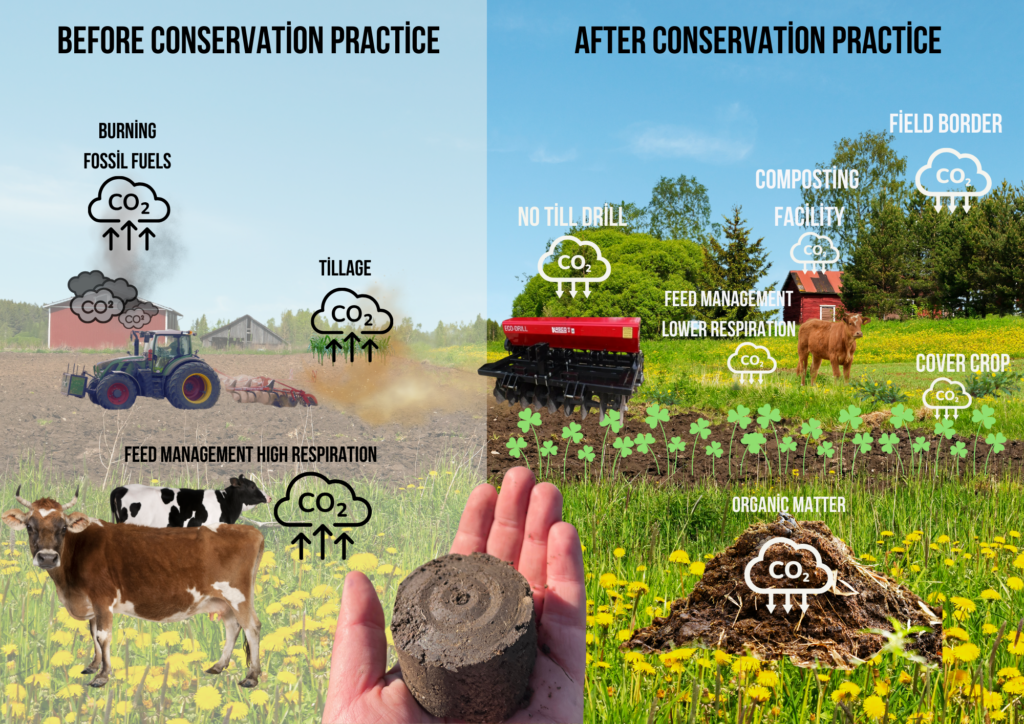You may be wondering, “How are carbon and ecological benefits related?” Carbon storage in your soil is altered by above-ground practices like USDA-NRCS program conservation practices.
Multiple methods exist for soil health improvement by adding a conservation practice. Soil health is important because it is the capacity of soil to sustain crop and animal productivity. A healthy soil is more resilient to drought and erosion, and will maintain a healthier environment. Healthier soils even improve human health. USDA-NRCS recommends the following soil health principles that are tailored to your operation to sustain, maintain, and improve soil health.
The principles of soil health are:
- Minimize disturbance
- Maximize soil cover
- Maximize biodiversity
- Maximize presence of living roots
NRCS further describes the soil health improvements in the context of these four principles on their Soil Health webpage. Below is an example of conservation practices added to an operation to improve carbon storage. On the left hand side we can see a few conventional practices that tend to release carbon into the atmosphere, such as burning fossil fuels, tillage, and livestock feed that encourages large methane and CO2 emissions. On the right hand side of the image we have conservation practices implemented that reduce, mitigate, or eradicate the agricultural practices that emit CO2. These conservation practices include placing organic matter such as manure on a field; cover crop during the shoulder season to reduce erosion or planting within cover crop; No till seed drills that minimize soil disturbance; altering the type of feed given to livestock to reduce their emissions, adding a composting facility to the property; and planting perennial plants along the field border to store carbon long term.

For a comprehensive list of conservation practices with potential for increasing soil carbon and reducing carbon emissions or loss, visit the NRCS Climate-Smart Mitigation Activities webpage.